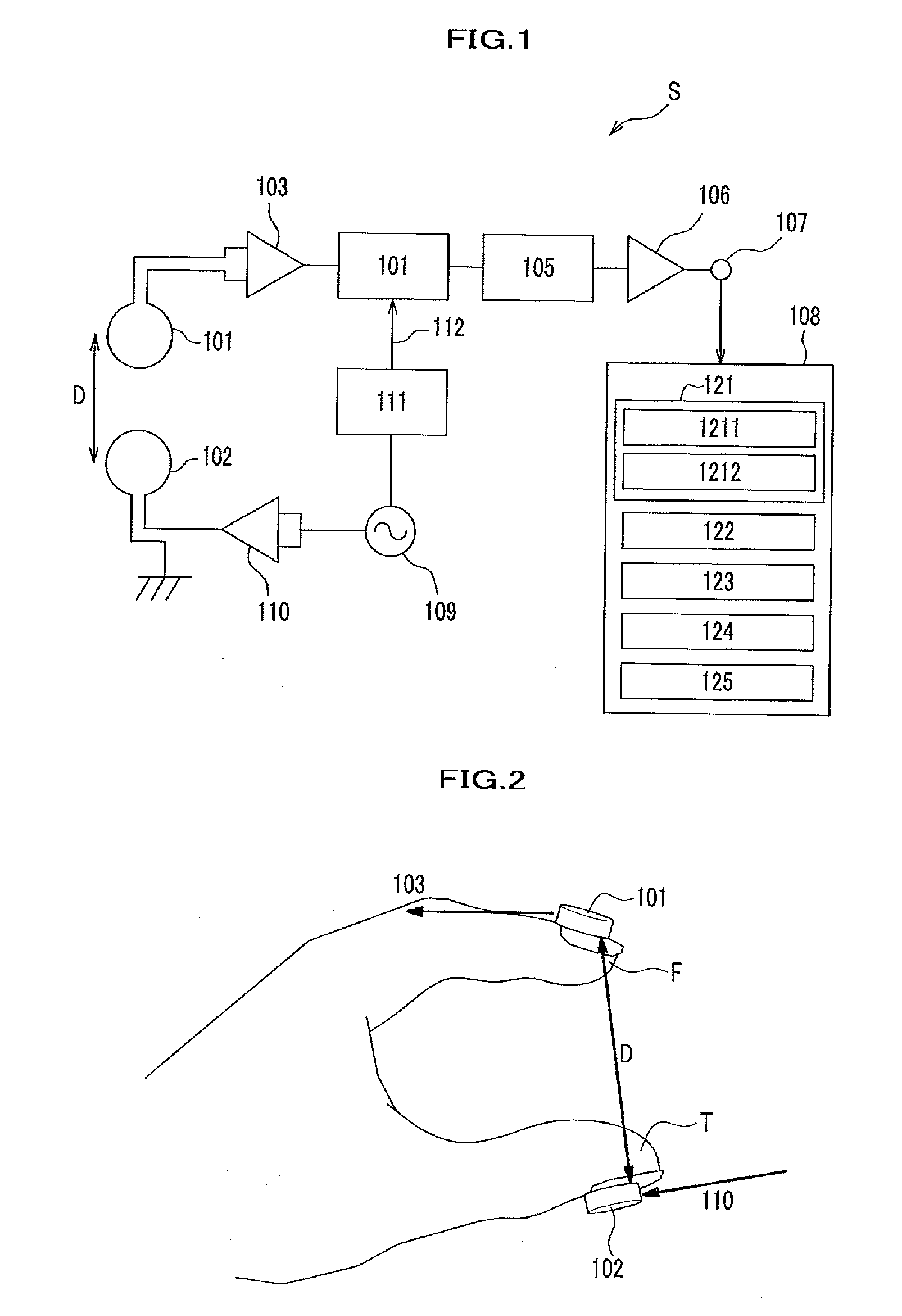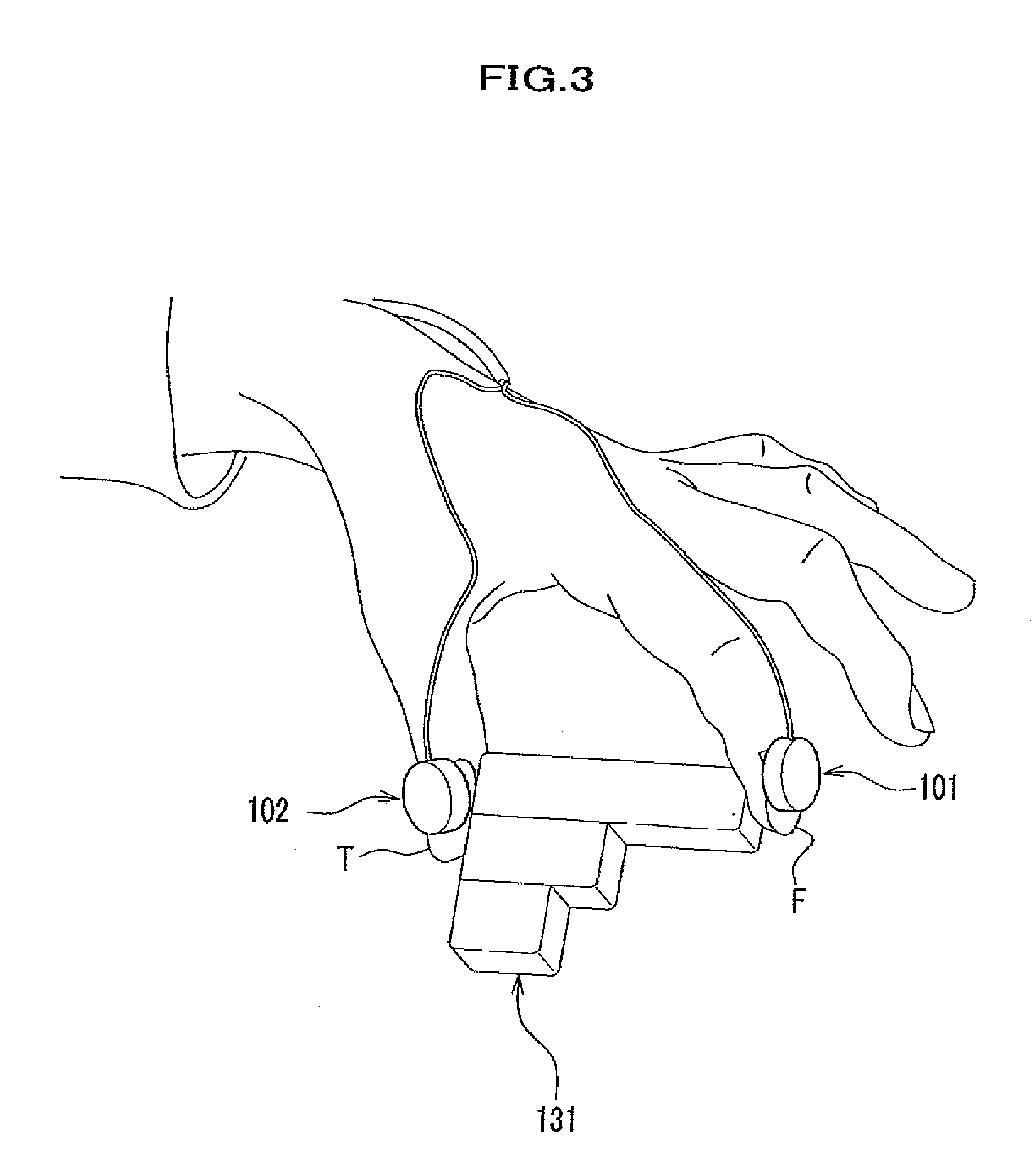Method of estimating finger-tapping force
a finger-tapping force and force technology, applied in the field of neurological disorder inspection technology, can solve the problems of increased medical cost, huge social loss, abnormal movement or coordination of neurological disorder patients,
- Summary
- Abstract
- Description
- Claims
- Application Information
AI Technical Summary
Benefits of technology
Problems solved by technology
Method used
Image
Examples
Embodiment Construction
[0032]The best mode (hereinafter called “embodiment”) for carrying out the present invention will be explained in detail with reference to the accompanying drawings.
[0033]FIG. 1 is a schematic diagram of a bioinstrument system according to an embodiment of the present invention. Each unit included in the system will be explained in detail in accordance with order of operations conducted in the present embodiment.
[0034]An AC oscillator circuit 109 produces an alternating current (hereinafter called AC current) having a predetermined frequency of 20 kHz etc. An electric-current-producing amplifier circuit 110 amplifies the AC current produced by the AC oscillator circuit 109 and having the predetermined frequency. The AC current amplified by the electric-current-producing amplifier circuit 110 flows through an oscillator coil of a magnetic sensor 102 which serves as a detector unit. The AC current flowing through the oscillator coil of the magnetic sensor 102 produces a magnetic field...
PUM
 Login to View More
Login to View More Abstract
Description
Claims
Application Information
 Login to View More
Login to View More - R&D
- Intellectual Property
- Life Sciences
- Materials
- Tech Scout
- Unparalleled Data Quality
- Higher Quality Content
- 60% Fewer Hallucinations
Browse by: Latest US Patents, China's latest patents, Technical Efficacy Thesaurus, Application Domain, Technology Topic, Popular Technical Reports.
© 2025 PatSnap. All rights reserved.Legal|Privacy policy|Modern Slavery Act Transparency Statement|Sitemap|About US| Contact US: help@patsnap.com



